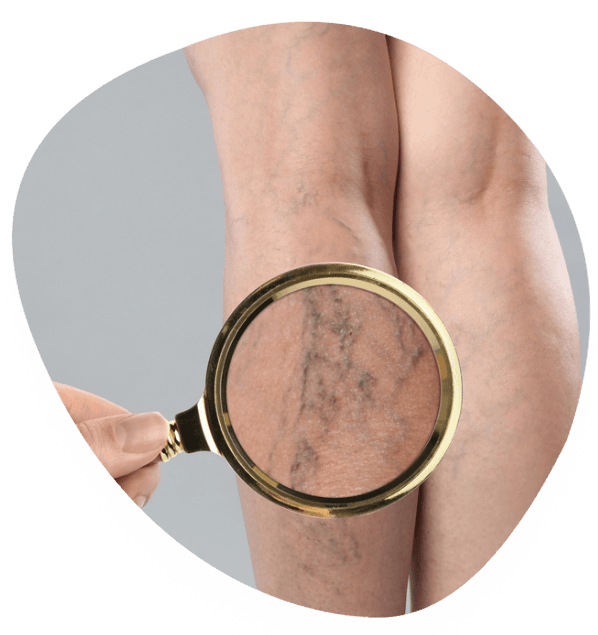Spider Veins
Symptoms and Differentiation from Varicose Veins
Spider veins are small, visible blood vessels that often appear on the legs and may be red, purple, or blue in color. They are named for their web-like or winding patterns. While many view them as purely a cosmetic issue, spider veins can sometimes develop into larger varicose veins, which may or may not present symptoms over time.
Common symptoms associated with spider veins include:
- Heavy legs
- Swelling in the ankles and legs
- Restless legs, especially at night or while sitting
- Leg pain, particularly at night or after prolonged standing
- Leg muscle fatigue
- Skin changes such as rashes or discoloration
- Ulcers in the lower leg
However, not everyone with spider veins will experience symptoms.
If you’re dealing with any combination of discomfort related to venous insufficiency, effective treatment options are available with little to no downtime. At Cellara Pain Institute in New Jersey, our skilled specialists provide expert care designed to enhance both your comfort and confidence—helping you achieve clearer, healthier-looking skin.
Do I have varicose veins?

Understanding Spider Veins
Spider veins are tiny, dilated blood vessels that often appear red, purple, or blue and commonly form web-like or winding patterns just beneath the skin’s surface.
What Causes Spider Veins?
Spider veins are typically caused by venous insufficiency, a condition in which weakened vein valves allow blood to flow backward and pool. Several factors may increase your risk of developing spider veins, including:
Family history of vein issues
Prolonged periods of standing or sitting
Obesity
Pregnancy
Previous blood clots
At Cellara Pain Institute, we offer advanced evaluation and treatment options to manage spider veins and restore healthy circulation.
Prevention Measures
Although genetics, excess weight, and pregnancy can increase the likelihood of developing spider veins, there are proactive steps you can take to reduce your risk. These include elevating your legs regularly, taking breaks if you stand for long periods, wearing compression stockings, and avoiding sitting with your legs crossed. These habits support healthy blood flow and may help prevent the formation of spider veins.
